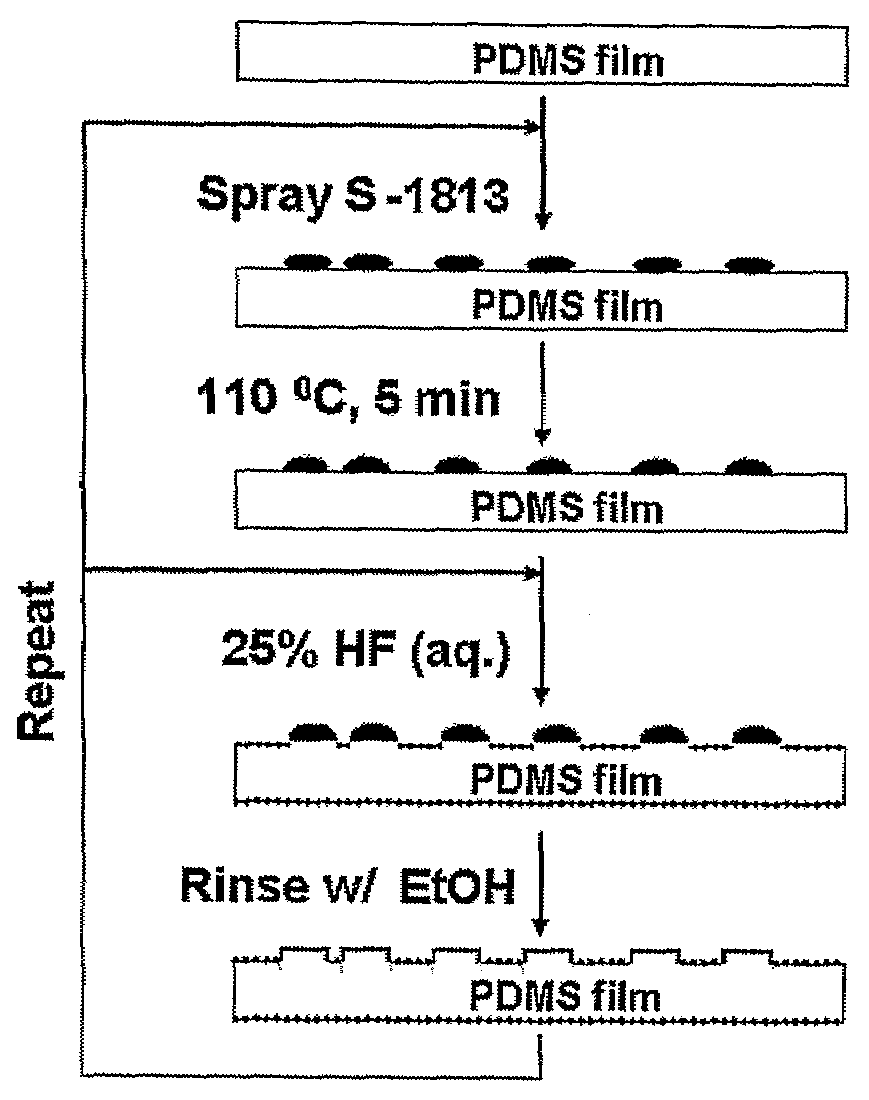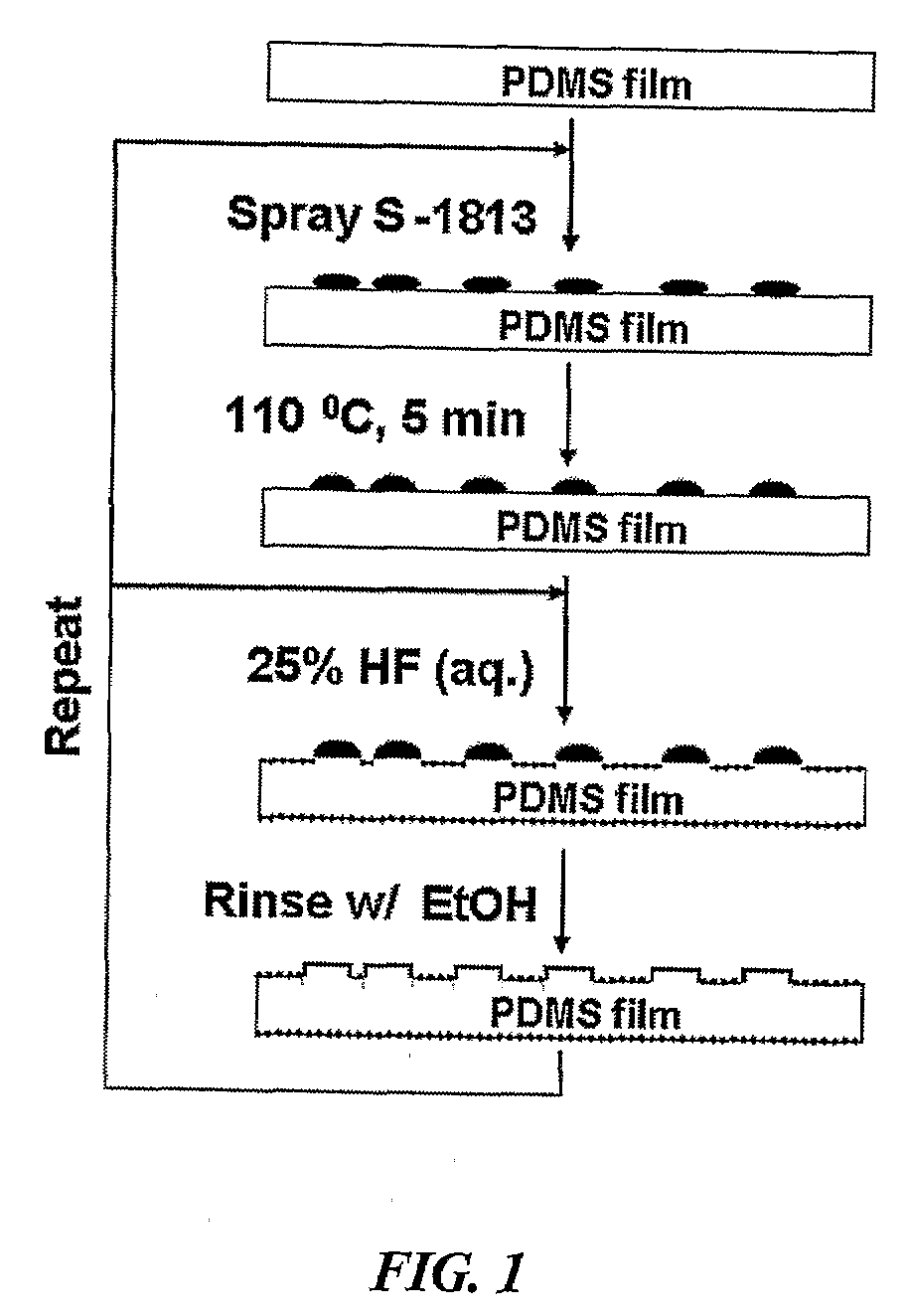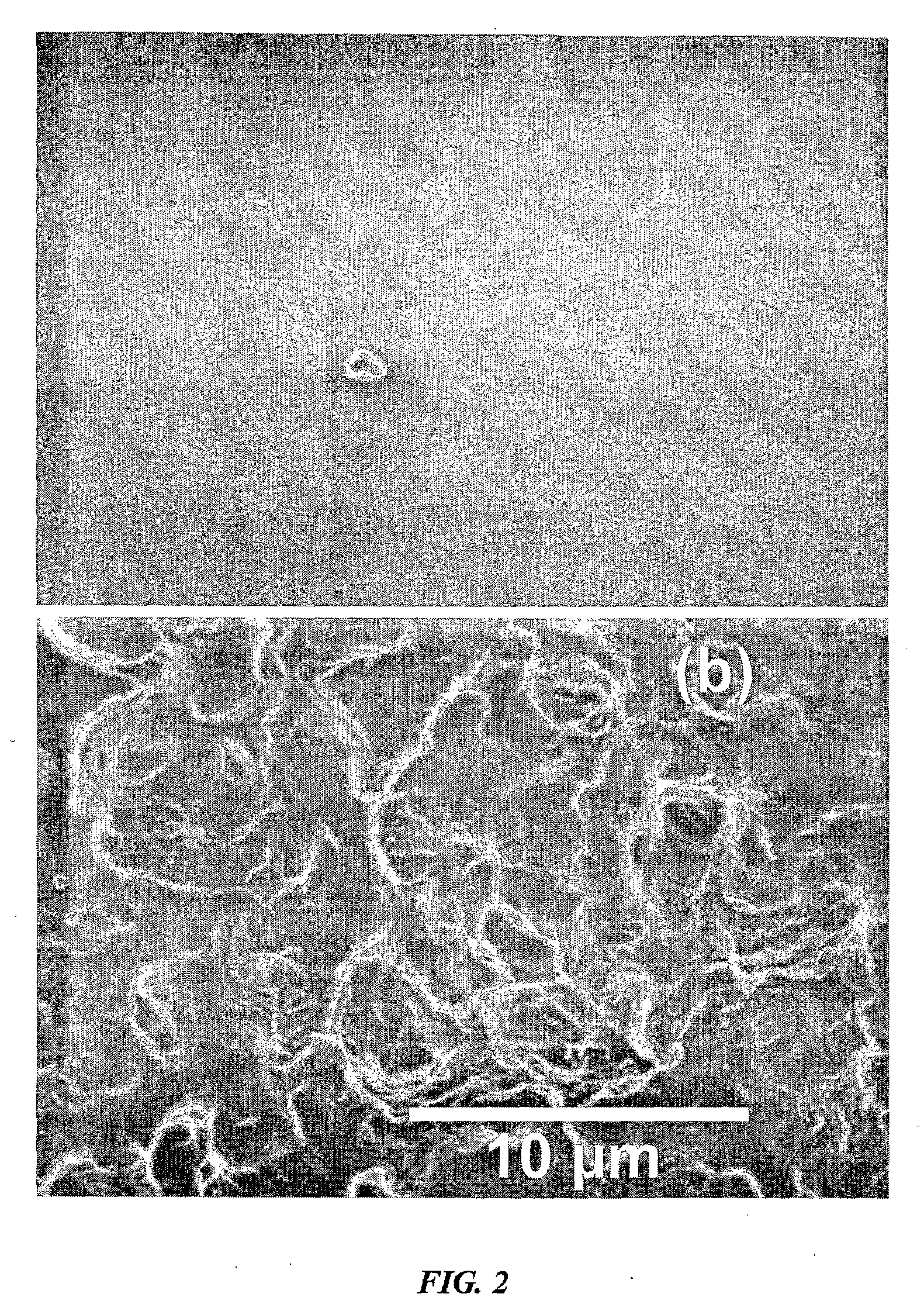Method of enhancing biocompatibility of elastomeric materials by microtexturing using microdroplet patterning
a technology of elastomeric materials and micro-droplet patterning, which is applied in the direction of coatings, decorative surface effects, decorative arts, etc., can solve the problems of unstable surface of elastomeric materials such as silicone elastomers, limited to flat device surfaces or uncured materials, and not fully addressed
- Summary
- Abstract
- Description
- Claims
- Application Information
AI Technical Summary
Benefits of technology
Problems solved by technology
Method used
Image
Examples
embodiment 1
Formation of Micro-Textured Film
[0053]Preparation of the micro-textured silicone elastomers follows the protocol set forth in FIG. 1. PDMS film was prepared using Dow Corning Sylgard® 184 Silicone Elastomer Kit. Specifically, PDMS films were prepared by mixing Dow Corning Sylgard® 184 silicone elastomer with the curing agent in a ratio of 10:1. The mixture was vacuumed and cured at 90° C. for 1 hour. The use of this kit is only exemplary; any known method of producing a PDMS film may be employed. A fine mist of Shipley 1813 solution (Microchem Corp.) was sprayed onto the PDMS film using a commercial portable paint sprayer (Preval® Spray Gun) followed by a hard baking at 110° C. for 5 minutes. These steps formed a pattern of hardened microdroplets on the PDMS surface. The resulting film was exposed to an aqueous 25% solution of hydrofluoric acid (HF) for 10 minutes to etch the uncoated PDMS film. This was followed by a water rinse. To remove the microdroplets of Shipley 1813, the sam...
embodiment 2
Comparative PDMS Treatment
[0055]To assess the effects of various treatment protocols on the surface of a PDMS film, sample films were subjected to the following treatments: (a) baking at 110° C. for 5 minutes, followed by etching in 25% aqueous HF for 60 minutes; (b) spraying with polymer solution, baking at 110° C. for 5 minutes, followed by etching in 25% aqueous HF for 60 minutes; (c) baking at 110° C. for 5 minutes, followed by etching in 25% aqueous HF for 2 minutes; and (d) spraying with polymer solution, baking at 110° C. for 5 minutes, followed by etching in 25% aqueous HF for 2 minutes. The protocols described above were employed. Bright field photographs of the resultant PDMS film surfaces (using reflected light) taken 68 days after preparation are shown in FIGS. 3(a)-3(d). As shown in the Figures, samples prepared with both the spraying and etching steps showed increased stability, with micro-structures persisting on the surface after 68 days, comparing to ones prepared i...
embodiment 3
Cell Attachment
[0056]To assess the ability of cells to adhere to both treated and untreated PDMS films as a measure of increased biocompatibility, HEK 293 cells (ATCC, CRL-1573™) were employed in a cell attachment test on the films. This cell line was chosen for ease of use and because it is often employed in assessing cell adhesion to various substrates. Examples of the use of HEK cells in this way can be found in Cui et al., Toxicology Lett. 155:73-85 (2005) (exposing single wall carbon nanotubes to HEK cells to assess biocompatibility of the nanotubes); Gumpenberger, et al., Lasers and Electro-Optics:CLEO / Pacific Rim 1434-1435 (2005) (seeding HEK cells onto a surface-modified polytetrafluoroethylene to assess cell adhesion); and Li et al., Pharmaceutical Research, 20:884-888 (2003) (exposing HEK cells to block copolymyers to assess cytotoxicity thereof). HEK cells were suspended at a concentration of 56,000 cells / ml in Dulbecco's Modified Eagle Media (Invitrogen) with 10% Fetal B...
PUM
| Property | Measurement | Unit |
|---|---|---|
| width | aaaaa | aaaaa |
| width | aaaaa | aaaaa |
| width | aaaaa | aaaaa |
Abstract
Description
Claims
Application Information
 Login to View More
Login to View More - R&D
- Intellectual Property
- Life Sciences
- Materials
- Tech Scout
- Unparalleled Data Quality
- Higher Quality Content
- 60% Fewer Hallucinations
Browse by: Latest US Patents, China's latest patents, Technical Efficacy Thesaurus, Application Domain, Technology Topic, Popular Technical Reports.
© 2025 PatSnap. All rights reserved.Legal|Privacy policy|Modern Slavery Act Transparency Statement|Sitemap|About US| Contact US: help@patsnap.com



